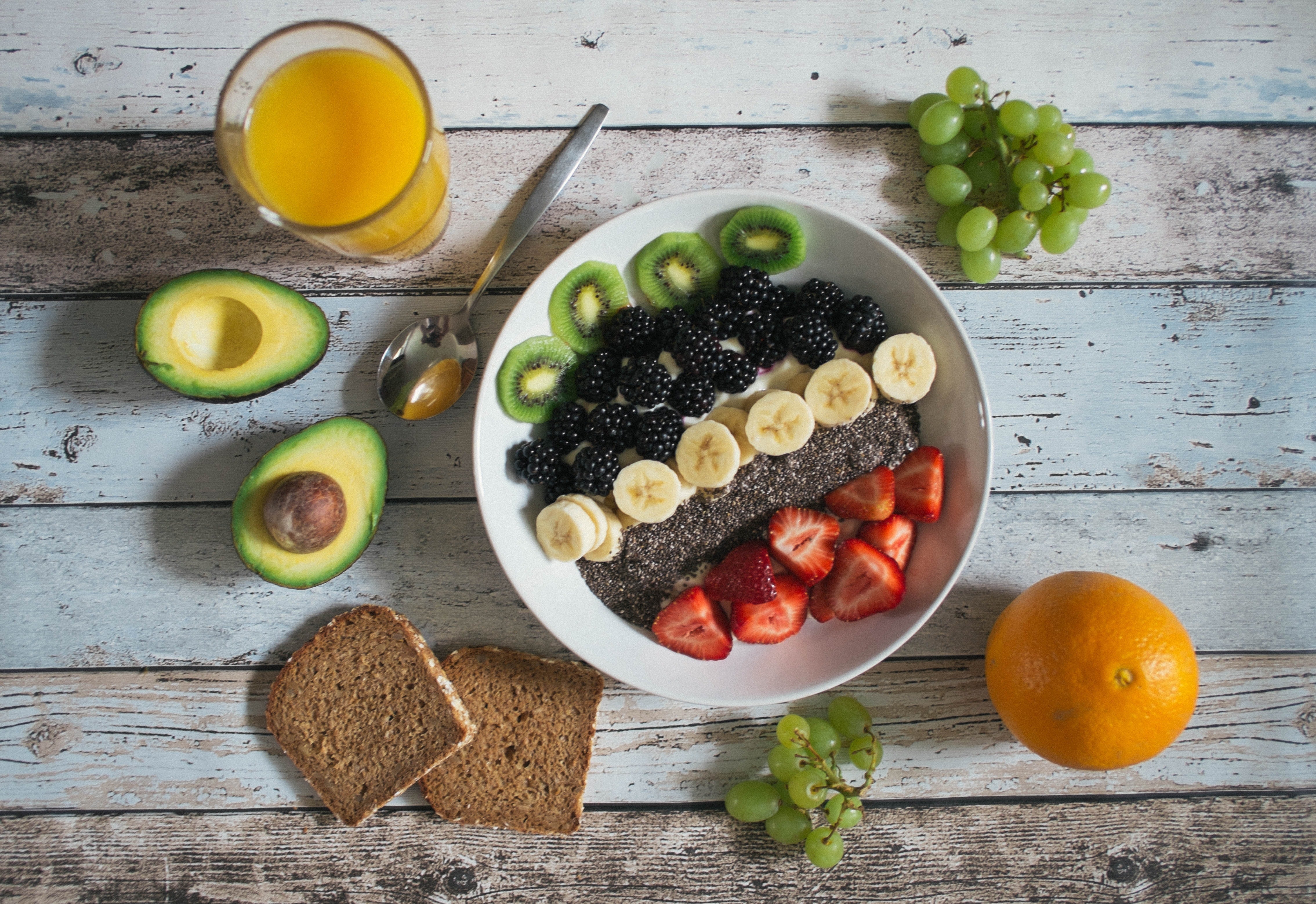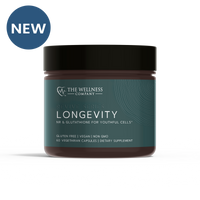The Role of Fiber in Achieving Optimal Health and Longevity

When it comes to nutrition, there isn’t much on which all experts agree. One thing, however, is uncontroversial: the more fiber you consume, the healthier you’re likely to be, and the longer you’re likely to live.
The supporting research is robust. A 2015 meta-analysis of almost one million people, published in the American Journal of Epidemiology, found that for every 10-gram increase in daily fiber intake, people experienced a 10% risk-reduction in all-cause mortality [1].
Despite the scientific understanding of the importance of fiber, we can’t seem to eat enough of it. In fact, only 5% of Americans meet the recommendations for daily fiber intake [2]. As far as nutrition goes, shooting for more fiber truly seems like some of the lowest-hanging fruit available to improve your health. In this article, we’ll cover what fiber is, why it is so good for us, and how you can get more of it on a daily basis.
What is Fiber?
Fiber is a type of carbohydrate found in plant-based foods that is not absorbed in the small intestine like other nutrients. It is classified as either soluble (dissolves in water) or insoluble (does not dissolve in water), and both types have been shown to have numerous health benefits.
Fiber-Rich Foods
If you’re not sure whether you’re getting enough fiber, consider picking up some of the high-fiber foods below on your next grocery shop:
- Legumes: beans, lentils, peas
- Vegetables: Brussel sprouts, broccoli, sweet-potatoes, carrots, peas, asparagus, corn, cauliflower
- Fruits: oranges, avocadoes, apples, pears, berries
- Seeds and nuts: almonds, pistachios, chia, flax, hemp, psyllium
- Grains: quinoa, brown rice, whole wheat bread, popcorn
Let’s take a closer look at how fiber can help you live a longer, healthier life.
Healthy Gut, Healthy Body
One of the ways that fiber enhances longevity is by promoting the health of our gut microbiome. While we don’t perfectly understand the balance of microbes needed to support optimal health, most researchers agree that some strains are “good,” some strains are “bad,” and the more diverse our microbiome, the better.
While fiber isn’t used to directly produce cellular energy, it feeds the “good” bacteria in the gut, and enhances the diversity of the microbiome, which has a host of positive consequences for our overall wellness [3]. While many people take probiotic supplements in hopes of adding new bacteria to the gut, fiber acts as a prebiotic, nurturing the good bacteria that already live there. Thankfully, it doesn’t take long for changes to occur in the microbiome; shifts to its composition have been measured as soon as 24 hours after a change in macronutrient intake [4].
Fiber Reduces Blood Pressure and Blood Sugar
In addition to its effects on gut health, research also suggests that high fiber intake reduces the risk of chronic diseases such as diabetes and heart disease, which are major contributors to shortened lifespan. How does it do this?
With respect to diabetes, fiber has been shown to exert its positive effects by moving markers like blood sugar levels in the right direction [6]. Soluble fiber specifically, due to its sponge-like ability to absorb water, slows down the digestion of carbohydrates, reducing the spikes in blood sugar which are so characteristic of metabolic disease [7].
In addition to managing blood sugar, the effect of prolonged digestion also explains why fiber-rich foods are harder to overeat than processed foods, and thus are so helpful for weight loss.
When it comes to heart disease, fiber-rich diets seem to exert their protective effects through a reduction in blood pressure [5], which is among the primary modifiable risk factors for cardiovascular disease. The most credible proposed mechanism for this effect centers around fiber’s aforementioned ability to reduce blood sugar. Chronically high blood sugar and the insulin resistance which typically accompanies it contribute to harmful blood vessel changes, and ultimately high blood pressure. To simplify, more fiber means lower blood sugar. Lower blood sugar means lower blood pressure. Lower blood pressure means less heart disease and a longer life.
Fiber Reduces Cancer Risk
In addition to its cardiovascular and metabolic benefits, fiber also appears to reduce the risk of certain cancers, such as colon cancer, a malignancy accounting for 11% of annual cancer deaths in America. Among other mechanisms, researchers believe insoluble fiber does this by bulking up the stool and moving it through the intestines more quickly, reducing the amount of time that potential carcinogens are in contact with the colon [8].
When it comes to cancer, the benefits of fiber aren't confined to the colon. In a fascinating 2021 study published in Science, researchers at the Anderson Cancer Center in Houston, Texas performed a cohort study investigating the association between fiber intake and probiotic supplementation on survival and disease progression for cancer patients [9]. Specifically, they tracked a metric called progression-free survival in patients undergoing immunotherapy for melanoma (skin cancer). For context, progression-free survival simply refers to how long patients survived with no cancer progression. The study results showed remarkable outcomes for those with high fiber intake. In fact, for each five-gram increase in fiber intake, there was a staggering 30% risk-reduction in tumor progression and death. The researchers concluded that this effect seems to be mediated by fiber’s effect on the gut microbiota composition. No similar benefit was seen with probiotic supplementation.
How Much Fiber Do You Need?
Recommendations vary from country to country, but the consensus recommendation seems to be somewhere between 25 to 40 grams per day, depending on your age, sex and weight [10]. A good rule of thumb is 14 grams per 1000 kcal of food ingested [11]. If you’re unsure, speak to a trusted health professional, such as one of our physicians at The Wellness Company, who can provide advice specifically tailored to you.
What About Supplements?
At this point, you might be wondering whether you need to get your fiber from whole-food sources, or if you can take a supplement and reap the same benefits. The short answer is that while supplements can be helpful, most of the research highlighting the health benefits of fiber has been performed using dietary interventions, so we can’t say for certain how precisely supplementation will mimic the outcomes described above [11]. Another reason a whole-foods approach may be superior is that eating fiber rich foods doesn’t just mean getting the benefits of fiber; it also means eating fewer overall calories, more nutrient-dense foods, and fewer processed foods. It’s not clear to what degree these other factors might influence health outcomes.
Video: Dr. Layne Norton does a deep dive on the study described above comparing fiber versus probiotics for cancer patients.
References
[1] Yang, Y., Zhao, L. G., Wu, Q. J., Ma, X., & Xiang, Y. B. (2015). Association between dietary fiber and lower risk of all-cause mortality: a meta-analysis of cohort studies. American journal of epidemiology, 181(2), 83-91.
[2] Quagliani, D., & Felt-Gunderson, P. (2017). Closing America’s fiber intake gap: communication strategies from a food and fiber summit. American journal of lifestyle medicine, 11(1), 80-85.
[3] Segata, N. (2015). Gut microbiome: westernization and the disappearance of intestinal diversity. Current Biology, 25(14), R611-R613.
[4] David, L. A., Maurice, C. F., Carmody, R. N., Gootenberg, D. B., Button, J. E., Wolfe, B. E., ... & Turnbaugh, P. J. (2014). Diet rapidly and reproducibly alters the human gut microbiome. Nature, 505(7484), 559-563.
[5] Khan, K., Jovanovski, E., Ho, H. V. T., Marques, A. C. R., Zurbau, A., Mejia, S. B., ... & Vuksan, V. (2018). The effect of viscous soluble fiber on blood pressure: A systematic review and meta-analysis of randomized controlled trials. Nutrition, Metabolism and Cardiovascular Diseases, 28(1), 3-13.
[6] Mcintosh, M., & Miller, C. (2001). A diet containing food rich in soluble and insoluble fiber improves glycemic control and reduces hyperlipidemia among patients with type 2 diabetes mellitus. Nutrition Reviews, 59(2), 52-55.
[7] De Carvalho, C. M., de Paula, T. P., Viana, L. V., Machado, V. M., de Almeida, J. C., & Azevedo, M. J. (2017). Plasma glucose and insulin responses after consumption of breakfasts with different sources of soluble fiber in type 2 diabetes patients: a randomized crossover clinical trial. The American journal of clinical nutrition, 106(5), 1238-1245.
[8] Zeng, H., Lazarova, D. L., & Bordonaro, M. (2014). Mechanisms linking dietary fiber, gut microbiota and colon cancer prevention. World journal of gastrointestinal oncology, 6(2), 41.
[9] Spencer, C. N., McQuade, J. L., Gopalakrishnan, V., McCulloch, J. A., Vetizou, M., Cogdill, A. P., ... & Wargo, J. A. (2021). Dietary fiber and probiotics influence the gut microbiome and melanoma immunotherapy response. Science, 374(6575), 1632-1640.
[10] Miller, K. B. (2020). Review of whole grain and dietary fiber recommendations and intake levels in different countries. Nutrition Reviews, 78(Supplement_1), 29-36.
[11] Dahl, W. J., & Stewart, M. L. (2015). Position of the Academy of Nutrition and Dietetics: health implications of dietary fiber. Journal of the Academy of Nutrition and Dietetics, 115(11), 1861-1870.














